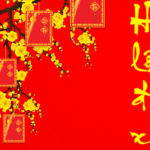The Feng Shui bat is a symbol of fortune and longevity, appearing in many aspects of life. So, if you want to learn more about this auspicious item, don’t miss out on our following article!
1 What is a Feng Shui Bat?
 What is a Feng Shui Bat?
What is a Feng Shui Bat?
The bat has a head and body quite similar to a mouse, so they are called flying mouse, fairy mouse, or lucky mouse. They also have the habit of hanging upside down in caves during the day, and at night, they come out to feed and socialize. It is this unique characteristic that led ancient people to associate them with deities.
During the reign of the Manchu emperors, red bats were used in auspicious symbols, often appearing alongside images of clouds, sky, and water embroidered on the emperor’s robe.
In Feng Shui, the bat is considered a symbol of good luck, fortune, longevity, peace, and prosperity. Due to its auspicious meaning, the bat is widely used in life and can be easily spotted in carvings, auspicious paintings, and other auspicious objects.
2 The Meaning of the Feng Shui Bat
 The Meaning of the Feng Shui Bat
The Meaning of the Feng Shui Bat
In Feng Shui, the bat represents good luck and is often used to attract wealth and peace. Therefore, it is commonly used as a decorative item in many households and large architectural designs, such as temples, sculptures, paintings, and some religious objects like bronze vases.
There is also a folk belief that “a bat flying into the house to make a nest is a good omen”. It is believed that they will bring good things to the homeowner. So, if you see a bat flying into your house, don’t chase it away!
3 The Image of the Feng Shui Bat
Artisans often combine the image of the bat with other symbols that convey specific intentions of the designer, such as bats holding a plaque, bats holding the character for longevity, or bats sitting on a peach… Each combination of images conveys different ideas and carries different meanings intended by the artisans and the traditional Feng Shui arrangements passed down from ancient times:
Image of Two Bats
The symbol of two bats with their wings spread wide, forming a large inner circle and facing each other, implies full and complete happiness. This image also suggests that good luck and fortune are doubled, as the two bats represent a perfect pair.
Image of Five Bats
 Image of Five Bats
Image of Five Bats
The image of five bats connected in Feng Shui is called “Five Blessings”, meaning five blessings bestowed by heaven. The combination of five bats is considered “Five Blessings at the Door”, signifying that heaven will bestow five great blessings on the homeowner, symbolizing a happy and fulfilling life.
Image of Bat Holding the Character for Longevity
 Bat Holding the Character for Longevity
Bat Holding the Character for Longevity
You may see the image of a bat holding the character for longevity on family altars or in temple architectures… The bat represents “”, and holding the character for longevity expresses the desire for “longevity and blessings” – a life of wealth, comfort, and longevity.
Image of Bat Holding a Coin
 Bat Holding a Coin
Bat Holding a Coin
The image of a bat holding a coin signifies good luck and abundant wealth. Using an object with a symbol of a bat holding a coin will help attract wealth and positive energy.
Image of Bat Holding a Plaque
The character “Plaque” already carries the meaning of happiness and joy. Thus, the image of a bat holding a plaque represents a peaceful and joyful life.
Image of Bat Sitting on a Peach
 Bat Sitting on a Peach
Bat Sitting on a Peach
In Feng Shui, the peach symbolizes immortality and is considered a precious fruit. Therefore, the image of a bat sitting on a peach conveys the meaning of longevity, peace, and abundant blessings.
Image of Bat on a Bronze Vase
In the worship space, bronze vases are highly favored. The exterior of these objects is often elaborately designed and crafted with sacred symbols, including the bat, which is one of the most commonly used Feng Shui symbols on bronze vases.
Image of Bat in Temples, Halls, and Shrines
 Image of Bat in Temples
Image of Bat in Temples
In addition to traditional architectural designs using dragons, unicorns, tortoises, and phoenixes… in sacred places of worship like temples, halls, and shrines, artisans also use bat-shaped reliefs in some halls.
4 The Effect of the Feng Shui Bat
 The Effect of the Feng Shui Bat
The Effect of the Feng Shui Bat
The image of the Feng Shui bat should be placed in auspicious positions in the house, especially in the living room, to attract more wealth and positive energy for the homeowner.
On the first day of the lunar month, hanging a picture of the Five Blessings at the front door is believed to invite blessings into the house. Moreover, the Feng Shui bat can also help improve some design flaws in the house that go against Feng Shui principles.
If your house has many crossbeams, you should hang a Feng Shui bat symbol or a picture of a bat at both ends of the crossbeam to avoid negative effects on the house’s energy and the family’s health. They will help neutralize the negative impact of the crossbeams.
5 How to Use the Feng Shui Bat
 How to Use the Feng Shui Bat
How to Use the Feng Shui Bat
When using the Feng Shui bat to attract blessings for your family, pay attention to the following to avoid any taboos and maximize its Feng Shui benefits:
- People born in the years of the Ox, Dragon, and Monkey are very suitable for using the Feng Shui bat to increase wealth and luck because the bat shares characteristics with the mouse.
- People born in the years of the Tiger, Horse, and Goat should not use the Feng Shui bat as they are incompatible with the mouse. Avoid hanging bat pictures in the south direction, as this is in conflict with the mouse.
- Hang bat pictures in the north, southwest, northeast, and southeast directions. These are favorable directions for bat pictures, bringing good omens to the homeowner.
The above is some basic information about the Feng Shui bat. Hopefully, you now understand more about this auspicious item and know how to use it correctly!
Unveiling the Meaning Behind New Year’s Harvest: Tips for Having Luck in 2021
Celebrating the start of the New Year, many customs and traditions come together in a joyous expression of good fortune. From harvesting the new year’s fortune to praying for fortune and luck, the humanistic meaning behind these practices remains as relevant as ever. But what is the origin and how can we properly partake in the harvest of the new year? Read on to learn more about this fascinating custom.





































